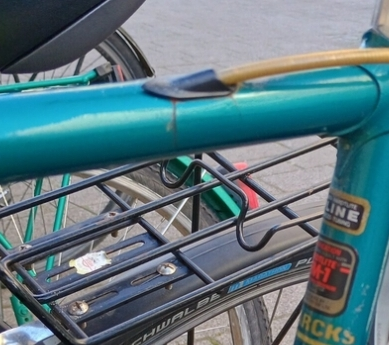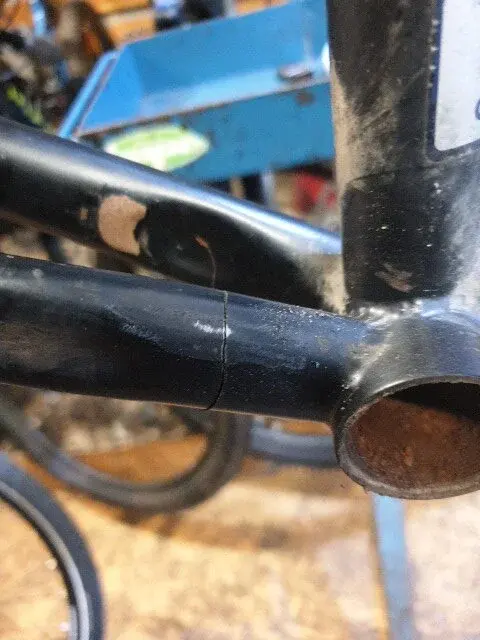One of my reasons for thinking good modern stuff is so superior to good old stuff is that weight for weight you can generally ride something as hard as you can and not worry about it breaking, or spend a good fifteen minutes inspecting it after every ride for signs of cracks forming.
In the last 30+ years of riding bikes I haven't actually broken that many frames (although plenty of other stuff also met an untimely end). Most of these were done in the late '90s/early '00s and failed because of well known design issues rather than because I was harsh on them. There were lots of bikes where things didn't line up (Intense were horrendous for that), you couldn't use intended settings because something interfered (like the low BB settings because linkage parts hit the chain device that you needed to use), or where parts just didn't fit because tolerances were so wide (like oversized headsets and undersized tubes), or derailleur hangers which didn't have a big enough stop for the B screw (early Orange 222s were bad for this)
Marin DH FRS x3 - the 'torque tube' design, weedy shock bolt design and QR just wasn't enough to hold the thing together and stop that torque tube torquing and ripping itself to pieces. I think they were also under stress when they were welded as an 8st kid shouldn't be able to break a frame that easily. One front end also met its untimely end with cracks underneath the dowtube/headtube junction).
Orange 222 - the swingarm shock mount cracked. Mostly this was down to shocks of the day being wildly underdamped and us hucking off stuff. Orange re-welded it and it was fine after that. Because the Orange design was pretty linear/bordering on regressive this meant that the bottom out force was high, especially when combined with not enough damping control and a bottom out bumper whose sole purpose was to stop a metal on metal clunk. Modern shocks have largely done away with this failure mode as there is way less risk of a large peak load occurring thanks to high quality dampers with appropriate shim/piston configs, and bottom out bumpers design to actually arrest motion.
Yeti DH8 - One of these didn't even make it to build up before noticing the upper pivot hadn't been welded properly. A second one was sent from the same batch which appeared fine. After four weeks it was cracked in the same spot. Needless to say this was sacked off as a bad idea. Lovely bike though.
Intense M1 - This was the last gen with 5th Element shock. By this point the front ends were solid, it was the back end that was an issue still. Most people broke seat stays which I did 4 or 5 of (where the machined dropout spar meets the super thin square tubing). The first ones were heavily butted, then less butted, then straight tube. They still broke. The one which lasted longest was one of the sets I had re-welded with additional internal bracing! I also did a set of chain stays which had cracked right on the weld from the tyre/pivot horse shoe to the rectangular tubing. This all happened in two years.
Nukeproof Mega AM - After six years of hard abuse the join between the chain stay pivot/tyre horseshoe to the chain stay tubing showed signs of cracking. This was after about 10,000km of riding steep, hard and technical trails between built stuff like Dunkeld and Innerleithen, and proper mountain stuff in the alps/highlands. I managed to get a spare set and sold that frame on.
In the grand scheme of things I've probably covered 100k km of pretty serious trails and while a lot of my old DH race bikes hardly saw more than 1 or 2 seasons of use, they noticeably improved after 2005. In fact I don't think I broke a DH frame beyond that. I think that was the point they really started to not just do stuff like slapping big plates on (which simply moved the stress elsewhere) and actually took the overall cycle of forces into account with FEA, and were beginning to settle down on a few ways of doing things that were known to work. It was also around the time that shocks started coming from the factory with better damping (although Fox really helped there in 2008 with different options that manufacturers could pick). Until now I've never broken a hardtail but then I've never been trying to treat a hardtail as a DH bike as I've always had something proper that's designed for the purpose of being abused on the big stuff.

